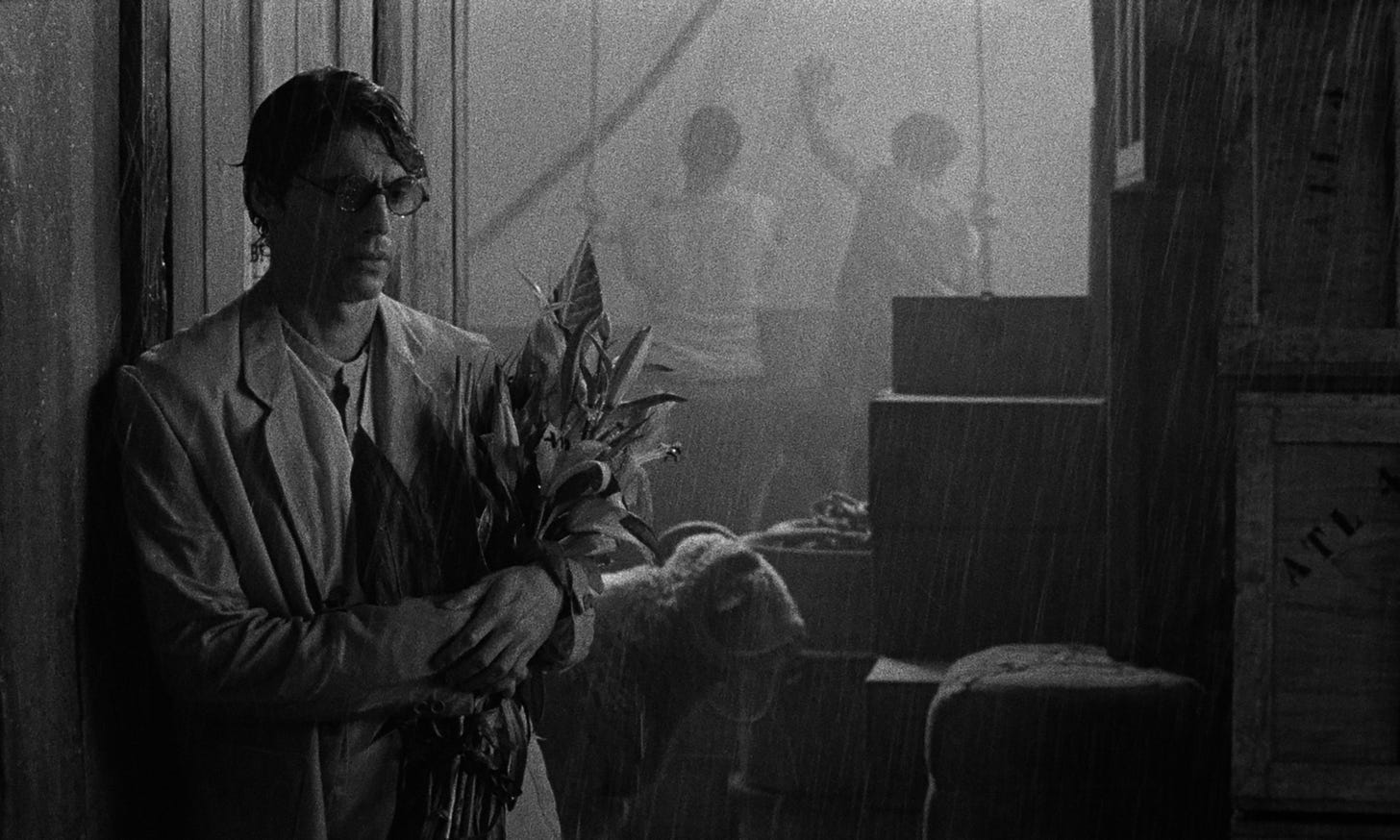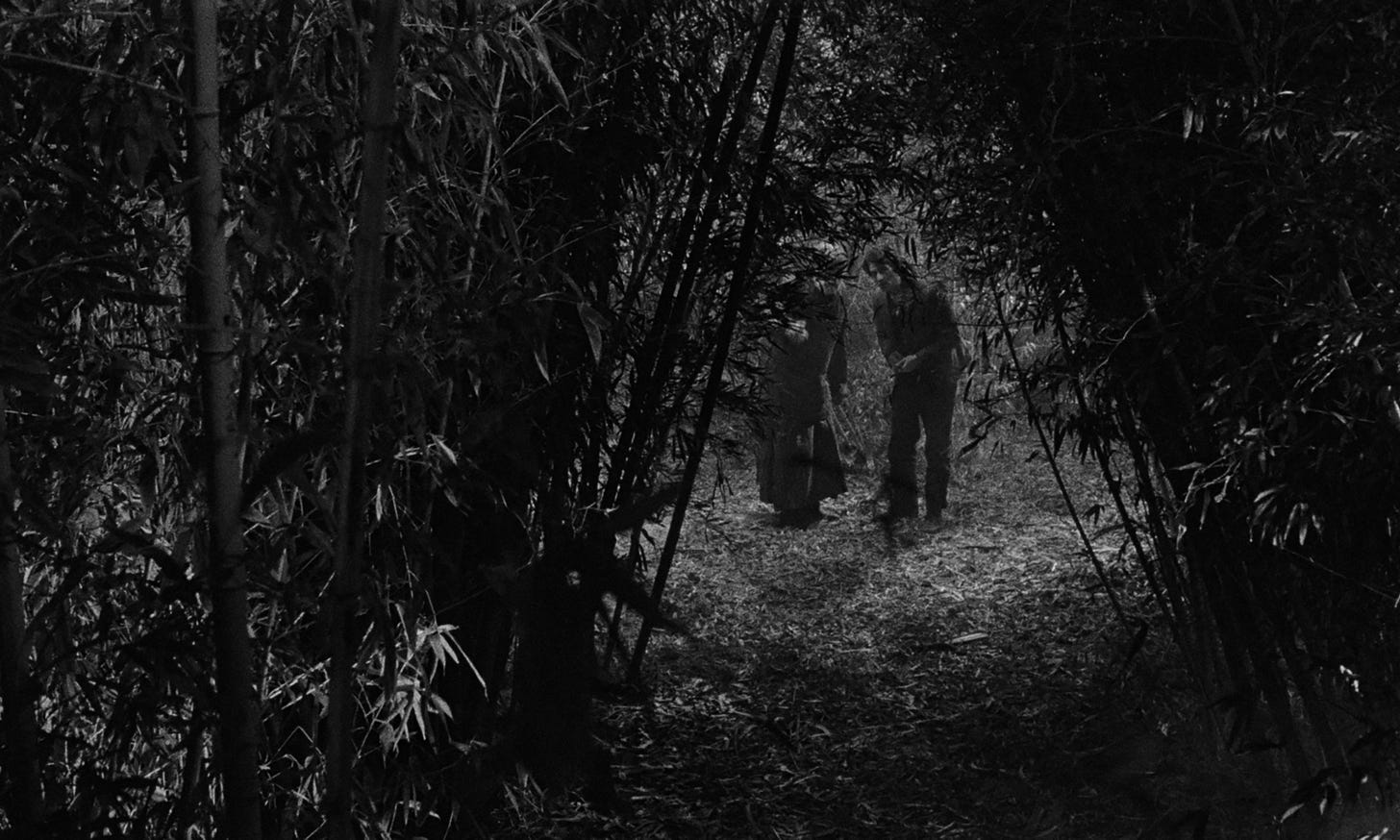NYFF Dispatch 5: A Grand Tour of Asia, in Film and Food
From Rangoon to Sichuan, and many places in between.
Tonight marks the first New York Film Festival screening of Grand Tour, which takes us on a journey through the colonial Far East. It also marks the first time I’m really able to integrate food-related material into my festival coverage, with a list of New York restaurants that will allow you to chart your own grand tour of Asian cuisine.
The Film Grand Tour
Acquired by MUBI; release date TBA.
The story follows Edward, an English diplomat stationed in Burma, as he journeys through colonial Asia in an attempt to dodge an impending marriage. As he ventures through the jungles of Thailand and the mountains of China, his fiancée, Molly, doggedly pursues him. She’s always a city or two behind, but both are undertaking parallel grand tours of the Far East. (There’s a “This is going to ruin the tour. The Grand Tour” gag in there somewhere.)
Miguel Gomes, a director unafraid of experimenting with cinematic form, is not merely content for his film to be set in 1918. He uses the conventions of silent films — iris shots, matte backgrounds, lots of fog — to make the time period accurate, not to the reality of early twentieth century Asia, but to how it was represented by Western artists1. The director’s fidelity to that era’s filmmaking accentuates the impossibility of making a truly realistic period movie. The grand tour of Grand Tour is an adventure through a colonial paradise that never really existed. Gomes doesn’t try to hide that he shot the film on soundstages. Why bother denying that this movie is fantasy?
You can’t film in Saigon anymore, but you can film in Ho Chi Minh City. To that end, the black and white fictional scenes are occasionally interrupted by contemporary color footage, showing what life in these cities look like today. In one scene, foreign dignitaries in Siam are waltzing to Strauss. In another, a Filipino man moves himself to tears while singing “My Way” on a karaoke machine. An imagined past and an authentic present are brought together in the way that only cinema can accomplish.
The Food Grand Tour
It turns out that I know people who hail from each of the seven countries depicted in this film2. Wanting to put together a “grand tour” of Asian food that mirrored the itinerary of the movie, I asked my friends a simple question: “what is your favorite ____ restaurant in New York?”
Their responses, which have been edited for clarity, are below. I thank them for their contributions.
Rangoon (Burma)
“There are only three or four Burmese restaurants in New York and they’re not that great. The best Burmese restaurant is in New Jersey: Amayar Kitchen in Maywood” — Claire
The journey from the city to Maywood is just as perilous as the one taken in the film. It’s a 45 minute bus ride from Port Authority.
Singapore
I cheated a bit here because I don’t think I know anyone who is actually from Singapore. But I asked a Malaysian friend for some recs. Chris has a lot of thoughts, but I always trust his taste.
So my take on this is that they’re really interchangeable and any calling themselves Singaporean like Laut is doing so for the Crazy Rich Asians train. They’re very much the same food and Singapore was once part of Malaysia so they’re one and the same, but for nationalistic pride they’ll say it’s different. I assure you they all come from the same origins, but Singapore has better marketing and more money
To me, the best Malaysian food can be found at Rasa in the West Village. They have uniquely Malaysian dishes like assam pedas, various laksas and nasi kerabu (blue rice colored with butterfly pea flowers) which is distinctly Malay. So much so that the Malaysian embassy actually caters from them. However, you have to know specifically what to order, since in order to survive, they’ve also had to sell Pad Thai and sushi among other things as people are not familiar with Malaysian food.
Kopitiam has more of the Malaysian canteen vibes that’s famous and well known. Lady Wong has kuih. This place on Mott Street has Malaysian beef jerky: air dried strips of meat that’s then BBQ’d. It’s salty sweet, and not anywhere close to any American jerky
Two recommendations for Hainanese chicken rice are:
Lou Yau Kee, inside Urbanspace Union Square (run by a Singaporean guy). My fave personally.
Hainan Chicken House, in Sunset Park. You can do a match up against these two
Another thing to note: the rise and fall of Urban Hawker: the place Anthony Bourdain once aspired to build up, and a famous Singaporean restaurateur gathered a bunch of famous hawker stall owners to come to set up shop. Also took advantage of Crazy Rich Asians. Downside: they were there for a few months, they trained up staff and left. Now food sucks versus when they first opened.
Sidenote: if there was a cocktail pairing for this film, it must be a Singapore Sling. A minor character has eighteen of the gin and pineapple cocktails on his tab, which was invented in 1915 at the Raffles Hotel in the then-British colony. The ever-reliable Punch has a good recipe. Like most tiki drinks, the specs make more sense when batched.
Bangkok (Thailand)
“SriPraPhai in Woodside but it’s quite far. Pranakhon is cute, predictably accessible (unlike Soothr), and near my apartment.” — Jason
Saigon (Vietnam)
“Mắm, for sure! They nail pretty much every dish they serve. Bánh has a really great xôi platter [ed note: I agree], and I quite like the Viet fusion dishes from Saigon Social. I thought their traditional stuff was good when they first opened but now it doesn’t really hit like it used to [I also agree]. I used to Doordash their northern Vietnamese dishes all the time during the pandemic ” — Minh-Anh
Manila (Philippines)
Glaiza writes:
Probably my overall favorite is Kabayan — no frills, just a solid range of Filipino food you’d never find in the city. You know it’s authentic too because it doubles as a venue with a built-in karaoke system and they also host kamayans.
In the city I’d say you can’t go wrong with Mama Fina’s if you want the mainstream Filipino foods done right and more accessible. If you want the prix fixe Filipino experience Tadhanà is great for a special occasion. My girlfriend likes Tradisyon a lot too, which is more casual dining and has a good assortment.
Osaka (Japan)
“My first is Tomi Jazz and a close second is Kimura!” — Daisuke
Sichuan Province (China)
Finally, Niu-Niu recommends Mountain House. There are locations in East Village and Flushing. Everyone I know calls it “Szechuan Mountain House” for some reason? Until now I didn’t know that wasn’t the actual name.
This is going to ruin the tour
If you went to each of my friends’ top restaurant recommendations, in the same order as the film’s path, there’s a lot of criss-crossing between Manhattan and Queens. (You can view the maps here if you’d like.) Wouldn’t recommend doing it in this order, but maybe possible to do it if you grouped up each spot by location?
I don’t think it is humanly possible to eat at seven restaurants in one day, but if you want to attempt a crawl, I swapped out some of the recommended restaurants and re-ordered the itinerary to make a more reasonable route. (Amayar Kitchen omitted from the map due to distance.)
And if you wanna try biking through two states and three boroughs…
Those attempting to do this Asian Grand Tour in just one day may befall the same dismal fate of the characters of Grand Tour. But this is doable in three separate outings. MUBI, feel free to sponsor me!
Heightening the unreality is the fact that the English characters are all speaking Portuguese.
Most of these friends were born in those countries, but in a couple cases, it was their parents who grew up there and that’s close enough.












